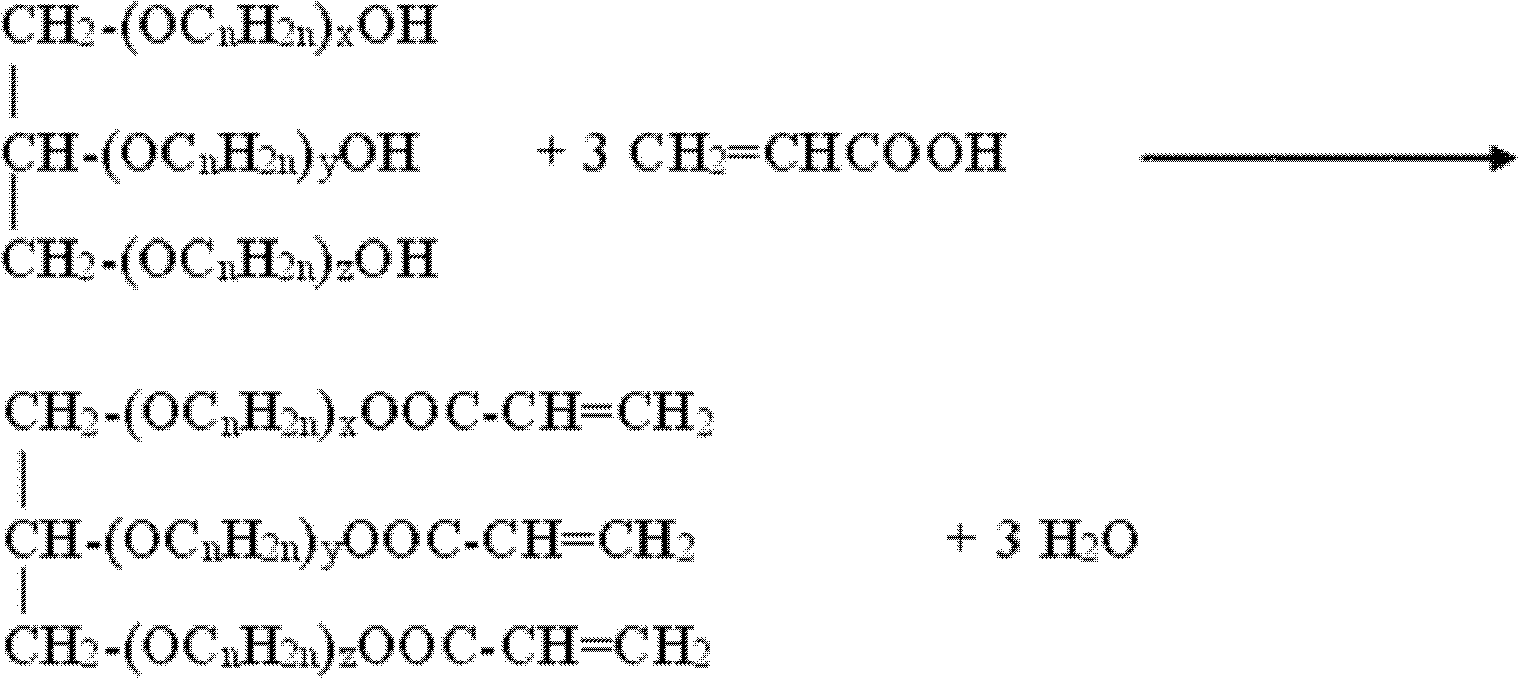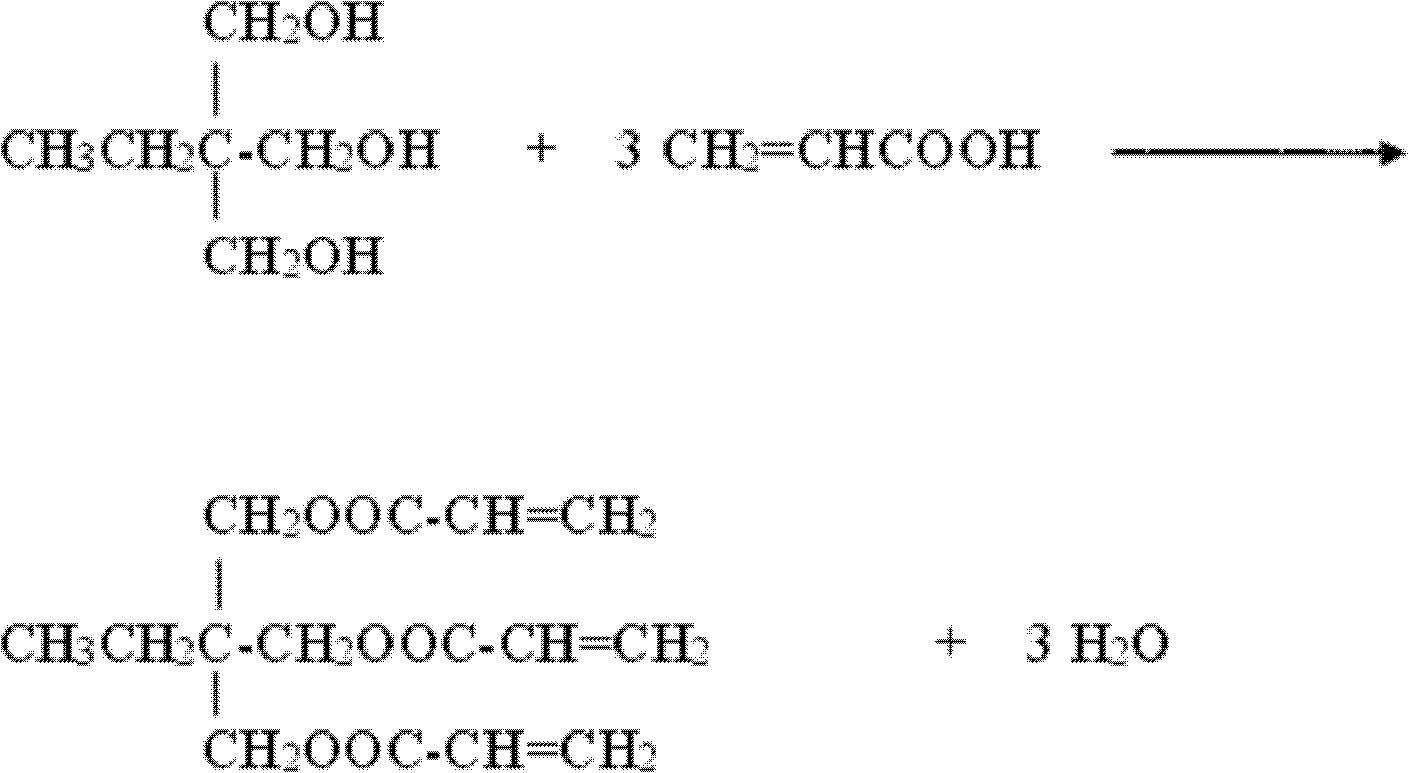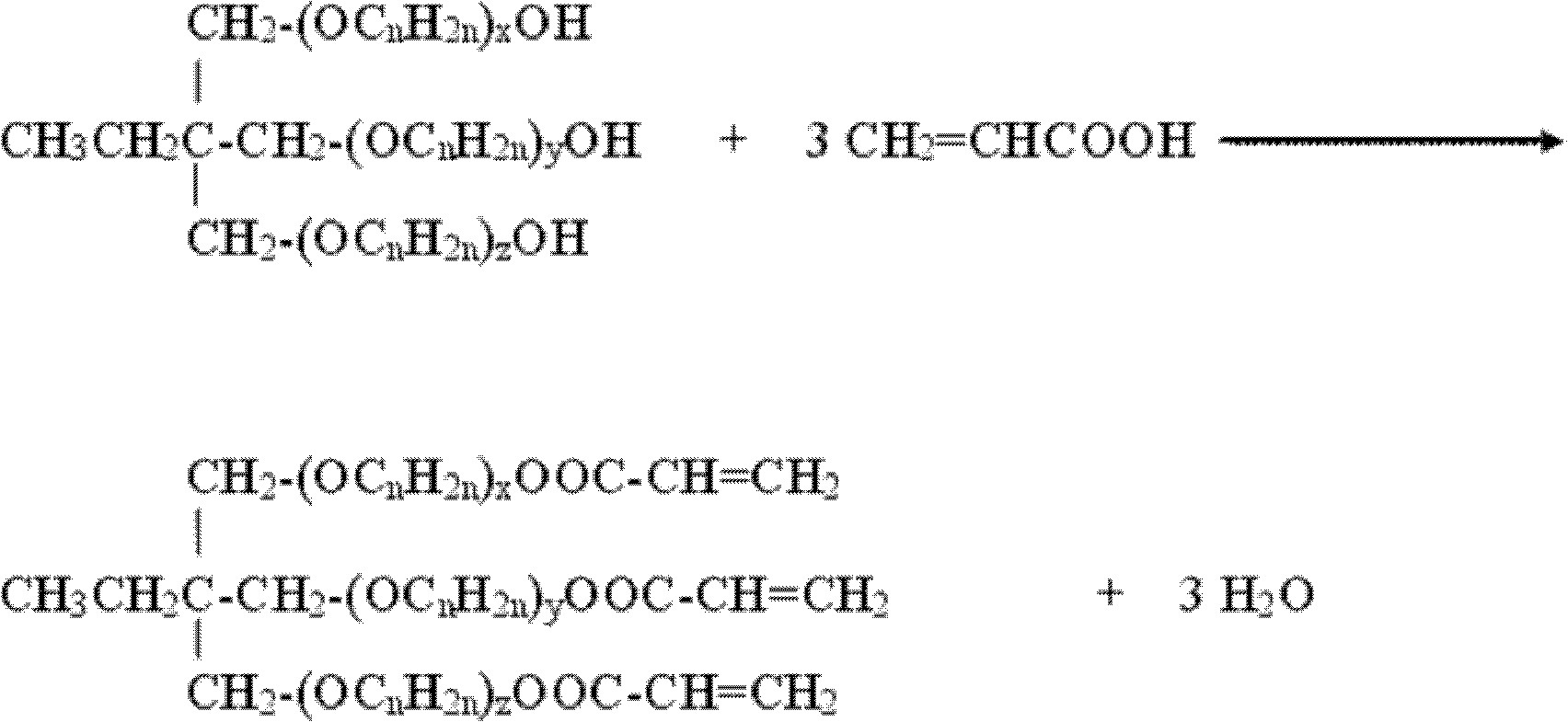Clean production method of alkoxylation glycerol triacrylate
A technology of glycerol triacrylate and alkoxylation, applied in chemical instruments and methods, separation/purification of carboxylate, preparation of carboxylate, etc., can solve the problems of rising cost, intractable treatment and high treatment cost
- Summary
- Abstract
- Description
- Claims
- Application Information
AI Technical Summary
Problems solved by technology
Method used
Image
Examples
Embodiment 1
[0061] In the 3000L reactor, drop into 600 kilograms of toluene, normal hexane 350, ethoxylated glycerin (C 9 h 20 o 6 , molecular weight 224) 618 kilograms, 655 kilograms of acrylic acid, 8 kilograms of p-hydroxyanisole, 9 kilograms of sodium hypophosphite, 55 kilograms of methanesulfonic acid; Open stirring, pass into compressed air continuously in the still by distributor at the bottom of the still, be heated up to Start reflux dehydration at 85-90°C, esterification reaction for 9-10 hours, kettle temperature 90-105°C, when reflux dehydration until no water comes out, the acid value is 25-30mgKOH / g, after the reaction is completed, cool to 40°C; add 25 kg of caustic soda and 60 kg of water, stirred for 30 minutes; added 6 kg of magnesium polysilicate, stirred and adsorbed for 30 minutes; then the water and solvent were distilled under reduced pressure at 50-95 ° C under a vacuum degree of -0.098 MPa, and the recovered water After stratification with the solvent, the water ca...
Embodiment 2
[0063] In the 3000L reactor, drop into 585 kilograms of cyclohexane, propoxylated glycerin (C 15 h 32 o 7 , molecular weight 324) 750 kilograms, 550 kilograms of acrylic acid, 9 kilograms of hydroxyanisole, 10 kilograms of hypophosphorous acid, 55 kilograms of p-toluenesulfonic acid; Stirring is started, and compressed air is continuously fed into the kettle by a distributor at the bottom of the kettle, and the temperature is raised to 80 Start reflux dehydration at -86°C, esterification reaction for 10-12 hours, kettle temperature 88-92°C, when the reflux dehydration until no water comes out, the acid value is 30-35mgKOH / g, the reaction is over, cool to room temperature; add 32 Kg of caustic soda and 75 kg of water, stirring for 30 minutes; adding 6.5 kg of magnesium polysilicate, stirring and adsorbing for 30 minutes; After the solvent is separated, the water can be used directly in the next neutralization without any treatment, and the solvent can be used directly in the ...
Embodiment 3
[0065] In the 3000L reactor, drop into 406 kilograms of methylcyclohexanes, 696 kilograms of cyclohexanes, ethoxylated glycerin (C 9 h 20 o 6 , molecular weight 224) 495 kilograms, 541 kilograms of acrylic acid, 13.3 kilograms of p-hydroxyanisole, 11 kilograms of sodium hypophosphite, 110 kilograms of p-toluenesulfonic acid; Stirring is started, and compressed air is continuously introduced into the kettle through the distributor at the bottom of the kettle to heat up Start reflux dehydration at 80-85°C, esterification reaction for 9-10 hours, kettle temperature 85-100°C, when reflux dehydration until anhydrous, detect acid value 25-30mgKOH / g, the reaction is over, cool to 40°C; Add 68 kg of caustic soda and 205 kg of water, stir for 30 minutes; add 22.7 kg of magnesium polysilicate, stir and absorb for 30 minutes; After the water and the solvent are separated, the water can be used directly in the next neutralization without any treatment, and the solvent can be used direct...
PUM
 Login to View More
Login to View More Abstract
Description
Claims
Application Information
 Login to View More
Login to View More - R&D
- Intellectual Property
- Life Sciences
- Materials
- Tech Scout
- Unparalleled Data Quality
- Higher Quality Content
- 60% Fewer Hallucinations
Browse by: Latest US Patents, China's latest patents, Technical Efficacy Thesaurus, Application Domain, Technology Topic, Popular Technical Reports.
© 2025 PatSnap. All rights reserved.Legal|Privacy policy|Modern Slavery Act Transparency Statement|Sitemap|About US| Contact US: help@patsnap.com



